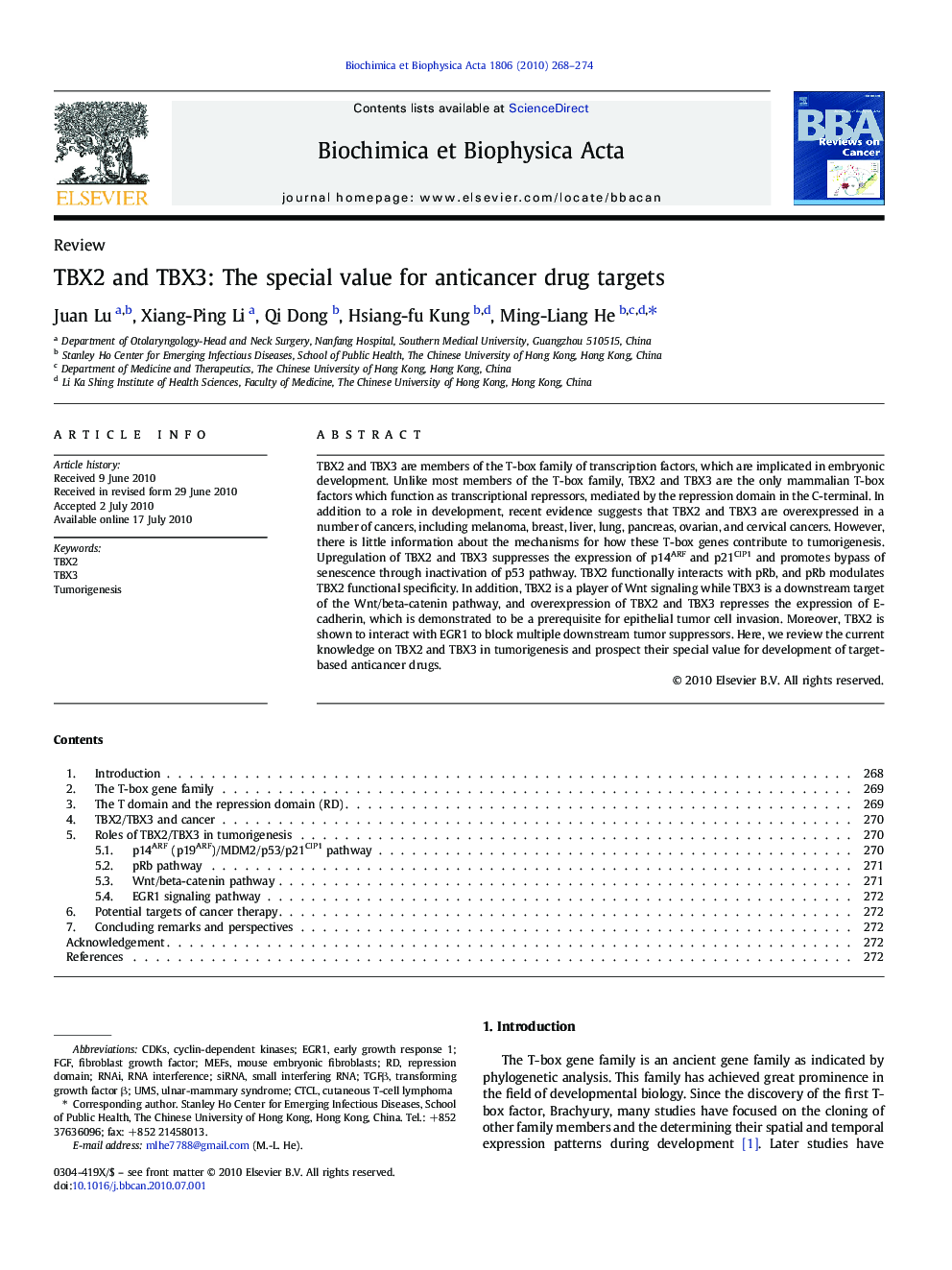| Article ID | Journal | Published Year | Pages | File Type |
|---|---|---|---|---|
| 2101021 | Biochimica et Biophysica Acta (BBA) - Reviews on Cancer | 2010 | 7 Pages |
TBX2 and TBX3 are members of the T-box family of transcription factors, which are implicated in embryonic development. Unlike most members of the T-box family, TBX2 and TBX3 are the only mammalian T-box factors which function as transcriptional repressors, mediated by the repression domain in the C-terminal. In addition to a role in development, recent evidence suggests that TBX2 and TBX3 are overexpressed in a number of cancers, including melanoma, breast, liver, lung, pancreas, ovarian, and cervical cancers. However, there is little information about the mechanisms for how these T-box genes contribute to tumorigenesis. Upregulation of TBX2 and TBX3 suppresses the expression of p14ARF and p21CIP1 and promotes bypass of senescence through inactivation of p53 pathway. TBX2 functionally interacts with pRb, and pRb modulates TBX2 functional specificity. In addition, TBX2 is a player of Wnt signaling while TBX3 is a downstream target of the Wnt/beta-catenin pathway, and overexpression of TBX2 and TBX3 represses the expression of E-cadherin, which is demonstrated to be a prerequisite for epithelial tumor cell invasion. Moreover, TBX2 is shown to interact with EGR1 to block multiple downstream tumor suppressors. Here, we review the current knowledge on TBX2 and TBX3 in tumorigenesis and prospect their special value for development of target-based anticancer drugs.
